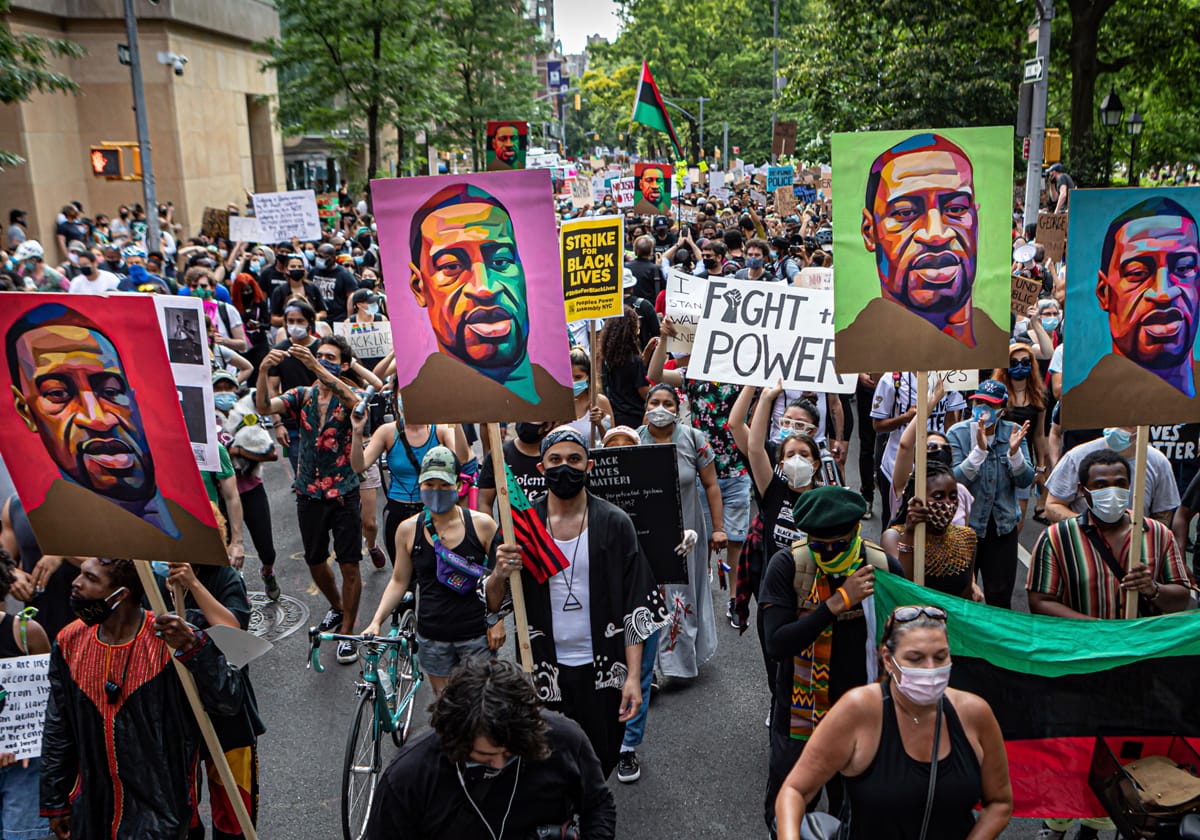
When Police Break Trust, Violence Spikes
The city of Minneapolis has seen 111 shootings since George Floyd was murdered by police on Memorial Day, according to the city’s police department.
After a mass shooting over the weekend in a popular area of the city brought more attention to the surge, Minneapolis Mayor Jacob Frey declared, “the violence and lawlessness that we’ve seen the last few days is not acceptable in any form. Residents, businesses and all that choose to be in Minneapolis for any reason deserve to feel safe.”
Much needed-reforms like the George Floyd Justice in Policing Act, passed by the House on June 25, acknowledge the interwoven nature of police brutality and gun violence by prioritizing funds for community violence prevention programs while also implementing measures to hold police accountable in court and improve data collection on police misconduct.
This legislation is part of a promising conversation taking place about how to root out racism and unjust policies so every community can be safe from all forms of violence. But once again, opponents of change are trotting out falsehoods about how protestors exercising their rights and expressing their anger at patterns of police abuse have led to a pullback in policing, which has in turn led to increased violence.
These arguments are reprehensible and flat-out wrong. In reality, many cities experience increases in gun violence in the summer months each year. And gun violence spiking in cities after high-profile incidents of police brutality is a well-documented phenomenon that researchers from Oxford, Harvard, and Yale named “the Jude Effect” in a 2016 study.
How the Jude Effect Works
In January, we published a report about policing and community trust exploring the Jude Effect and the cycle of police-community distrust that is both a cause and effect of low violent crime reporting, low arrest rates for shootings, and high levels of community violence.
In 2004, a Black man named Frank Jude was brutally beaten by both on-duty and off-duty police officers at a party in Milwaukee. No action was taken against the officers until months later, when the Milwaukee Journal Sentinel broke the news about the beating and thousands of protestors gathered to demand action be taken against the officers.
Researchers found that after news of Jude’s beating broke in February 2005, there was a nearly 20% drop in 911 calls reporting crimes to the Milwaukee police. Residents placed an estimated 22,000 fewer 911 calls reporting crimes to the police over the course of the following year.
It should come as no surprise that, after seeing what happened to Frank Jude, residents—particularly Black residents—were hesitant to put themselves at risk by calling the police. As 911 calls fell, violence spiked: homicides in Milwaukee jumped by one-third in the summer of 2005.
The Jude Effect can explain, at least in part, the spikes in gun violence that many American cities have seen since 2014, when the murder of Michael Brown at the hands of the police led to outrage and anger across the nation. After that death, conservative commentators embraced an alternative theory to explain these spikes in violence, which they’ve dubbed “the Ferguson Effect.”
Why the Ferguson Effect Theory is Wrong
Coined by Heather MacDonald of the Manhattan Institute, the Ferguson Effect theory claims that spikes in violence in 2014 were due not to the public’s fear and distrust of the police, but to police forces being too frightened of being accused of misconduct to stop crime. This conception of the role of the police in stopping violent crime pathologizes Black and Brown communities—portraying them as inherently violent, unwilling or unable to address violence, and as needing outside intervention or control.
Proponents of the Ferguson Effect theory ignore just how concentrated and unchecked by law enforcement most community violence currently is, and how important the community’s role is in effectively deterring that violence. In 2017, the National Institute of Justice wrote that evidence for the Ferguson Effect was “ambiguous at best,” instead attributing spikes in violence in Chicago and many other cities to the trust gap. A 2018 Congressional Research Service report similarly found “little evidence of a link between de-policing and increases in violent crime.”
Recent examples of the police tear gassing protestors in 100 American cities, violently shoving a 75-year-old man, shooting (and in some cases seriously injuring) reporters with rubber bullets, and beating protestors with batons while the eyes of the world are upon them clearly show that many police officers are not all that afraid of committing misconduct—throwing another wrench into the Ferguson Effect theory. It’s time to stop discounting the lived experiences of Black Americans, and to take action that will make our country a safer place for all.
The Road to Reform
As this recent piece in the Atlantic points out, the acts of police violence that our nation is attempting to reckon with cannot be separated from our epidemic of gun violence. We live in a country with more guns than people, and time and again, research has proven that more guns means more violence. A heavily armed populace and panicky officers with weapons of war and ingrained implicit and explicit biases is a lethal combination.
To turn back the tide of violence in Minneapolis and other cities, we must both work to fundamentally change a policing and justice system that is clearly broken and curb the raging epidemic of gun violence that disproportionately harms communities of color.
Investing in community-based violence intervention programs and passing lifesaving gun laws will get us that much closer to making this a country where 40,000 lives a year aren’t cut short by a bullet from a gun.